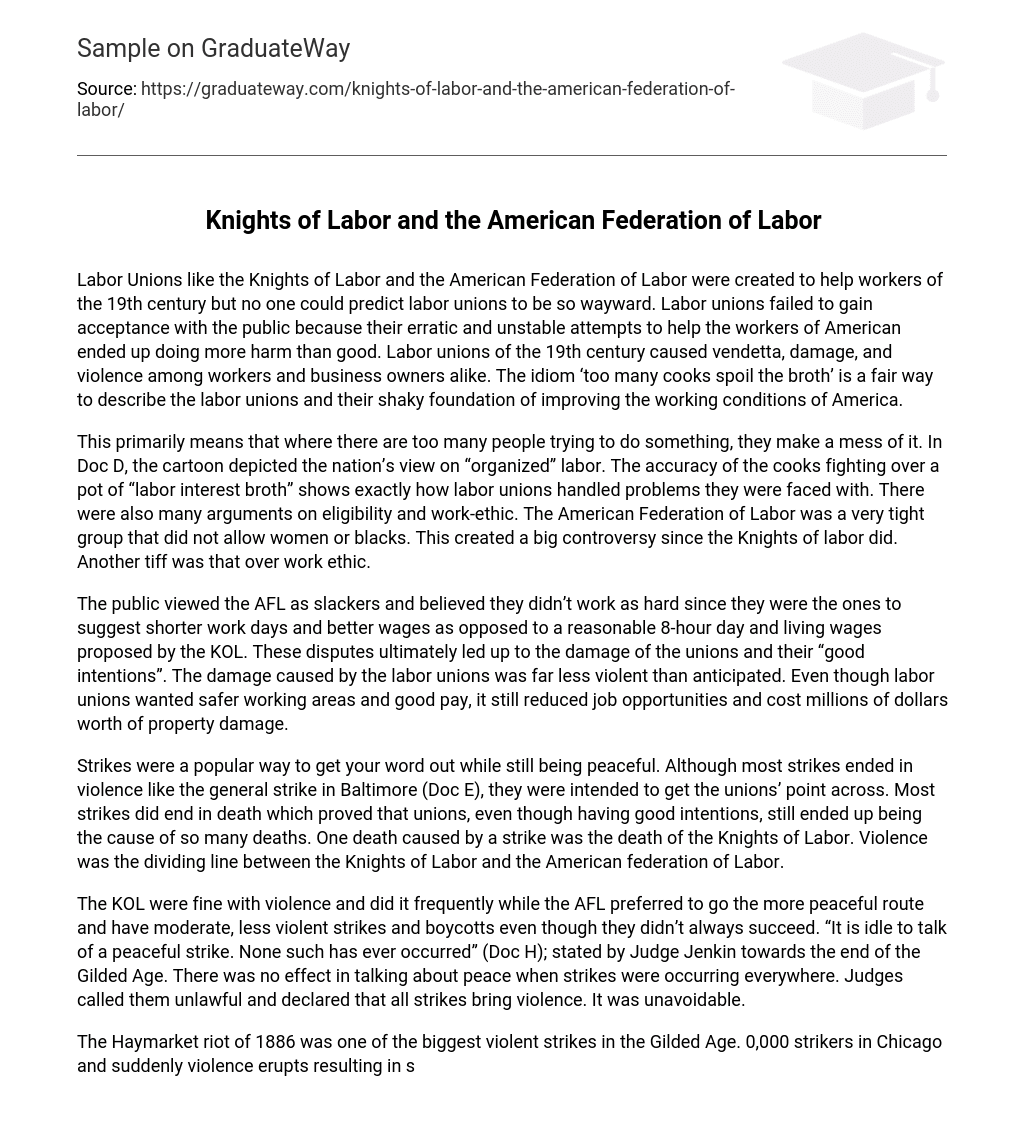The labor unions, including the Knights of Labor and the American Federation of Labor, were founded in the 19th century with the aim of supporting workers. Nonetheless, their actions had unforeseen outcomes that hindered their public acceptance. Rather than effectively aiding workers, these unions incited conflicts, harm, and even violence between workers and business owners. This can be likened to the idiom ‘too many cooks spoil the broth,’ illustrating the labor unions’ unstable approach to enhancing working conditions in America.
This means that when there are too many people trying to do something, they tend to make a mess of it. In Doc D, the cartoon represented the nation’s perspective on “organized” labor. The accuracy of the cooks fighting over a pot of “labor interest broth” accurately demonstrated how labor unions dealt with challenges. There were also numerous debates about eligibility and work ethic. The American Federation of Labor was an exclusive organization that excluded women and blacks, which caused significant controversy as opposed to the Knights of Labor who allowed them. Another point of contention was the disagreement over work ethic.
The AFL was perceived by the public as being lazy and not putting in as much effort because they were the ones advocating for shorter work days and higher wages instead of the more reasonable proposal of an 8-hour day and livable wages put forth by the KOL. These disagreements ultimately resulted in harm to the unions and their original intentions. However, the impact caused by the labor unions was not as violent as expected. Despite their push for safer working conditions and fair pay, it still led to a decrease in job opportunities and caused millions of dollars’ worth of property damage.
Although strikes were a widely used and peaceful approach to expressing opinions, they often became violent like the general strike in Baltimore (Doc E). These strikes aimed to convey the unions’ message but tragically led to numerous deaths, highlighting the unions’ responsibility for such casualties. Ultimately, the Knights of Labor met their downfall due to violence, distinguishing them from the American Federation of Labor.
The Knights of Labor (KOL) and the American Federation of Labor (AFL) had differing strategies for achieving their objectives. The KOL frequently turned to violence during strikes, whereas the AFL preferred employing more peaceful means like moderate strikes and boycotts, though they were not always effective. Towards the end of the Gilded Age, Judge Jenkin contended that peaceful strikes were simply an illusion and that violence was inevitable. This perspective was held by numerous judges who deemed all strikes illegal and inherently violent.
The Haymarket riot of 1886, which occurred during the Gilded Age in Chicago, was a significant and violent strike involving thousands of strikers. This outbreak of violence resulted in numerous deaths, including eight police officers and ten rioters. As a consequence, tensions were further heightened. Additionally, following this event, the membership of the Knights of Labor (KOL) significantly declined from 800,000 to 100,000 members within four years.
Despite their well-meaning intentions, labor unions caused more harm than good, resulting in tragedy and inciting violence. They fostered vendetta among businesses, inflicted damage upon America, and even sparked violence among citizens. As a result of public resistance, these unions were destined to fail.





